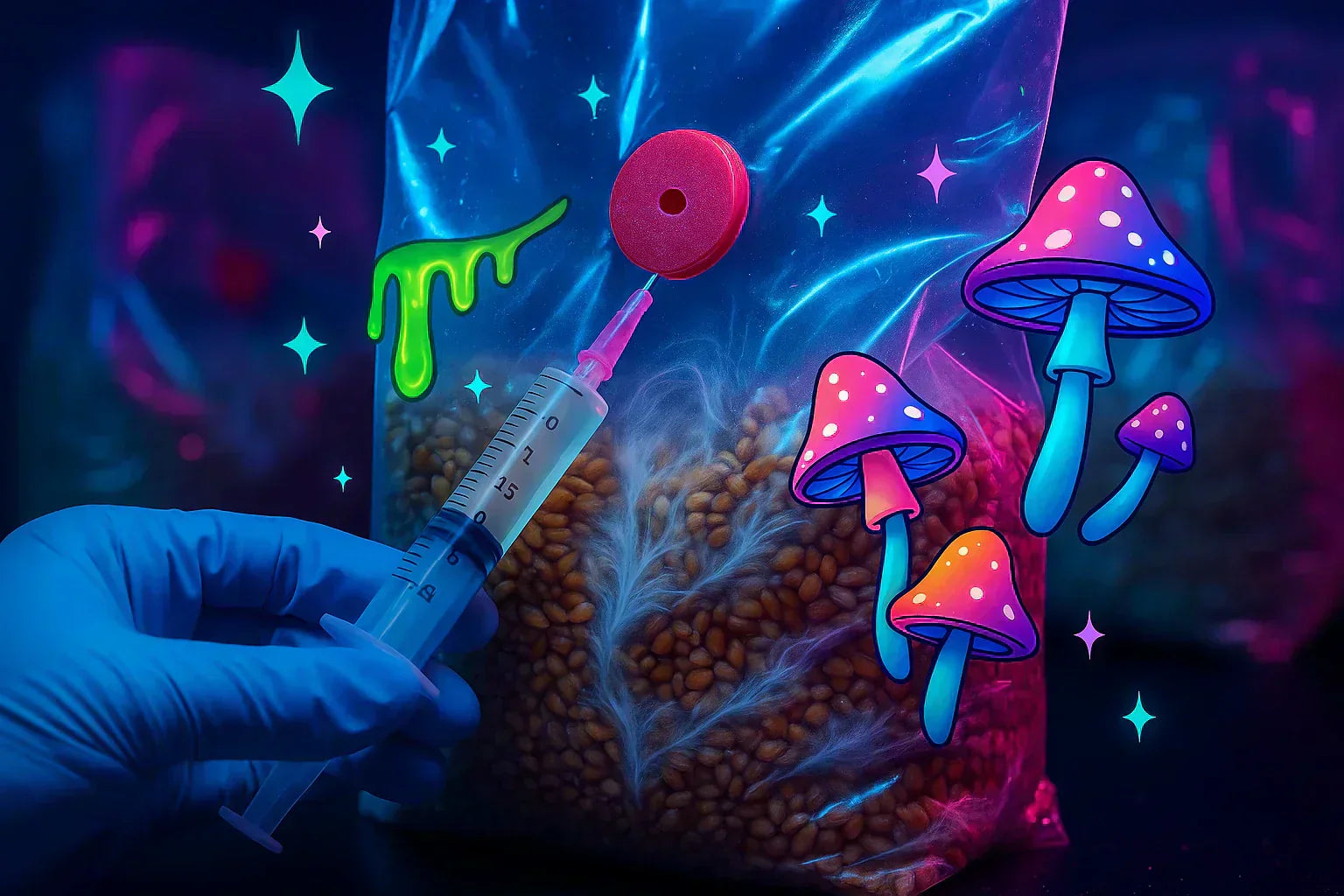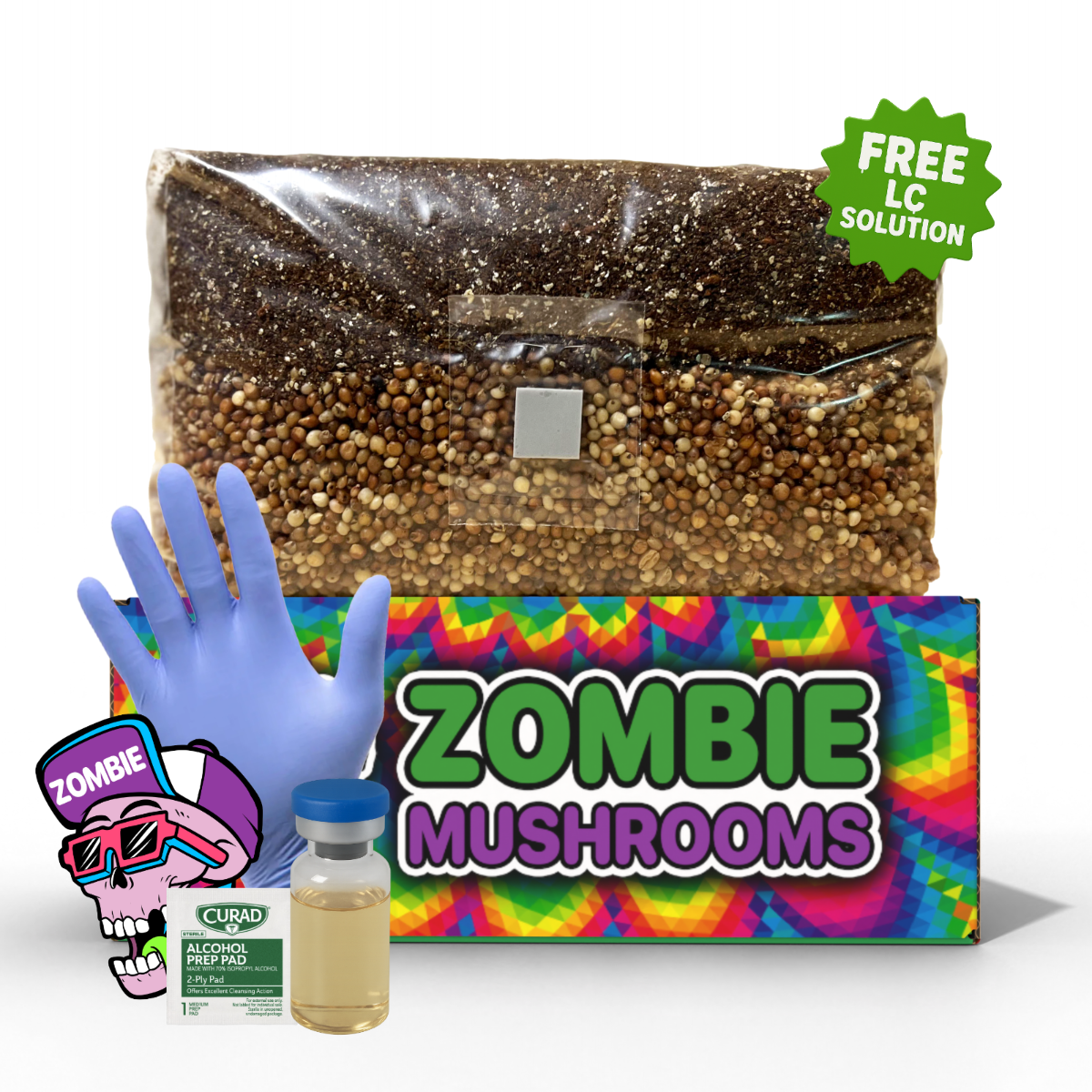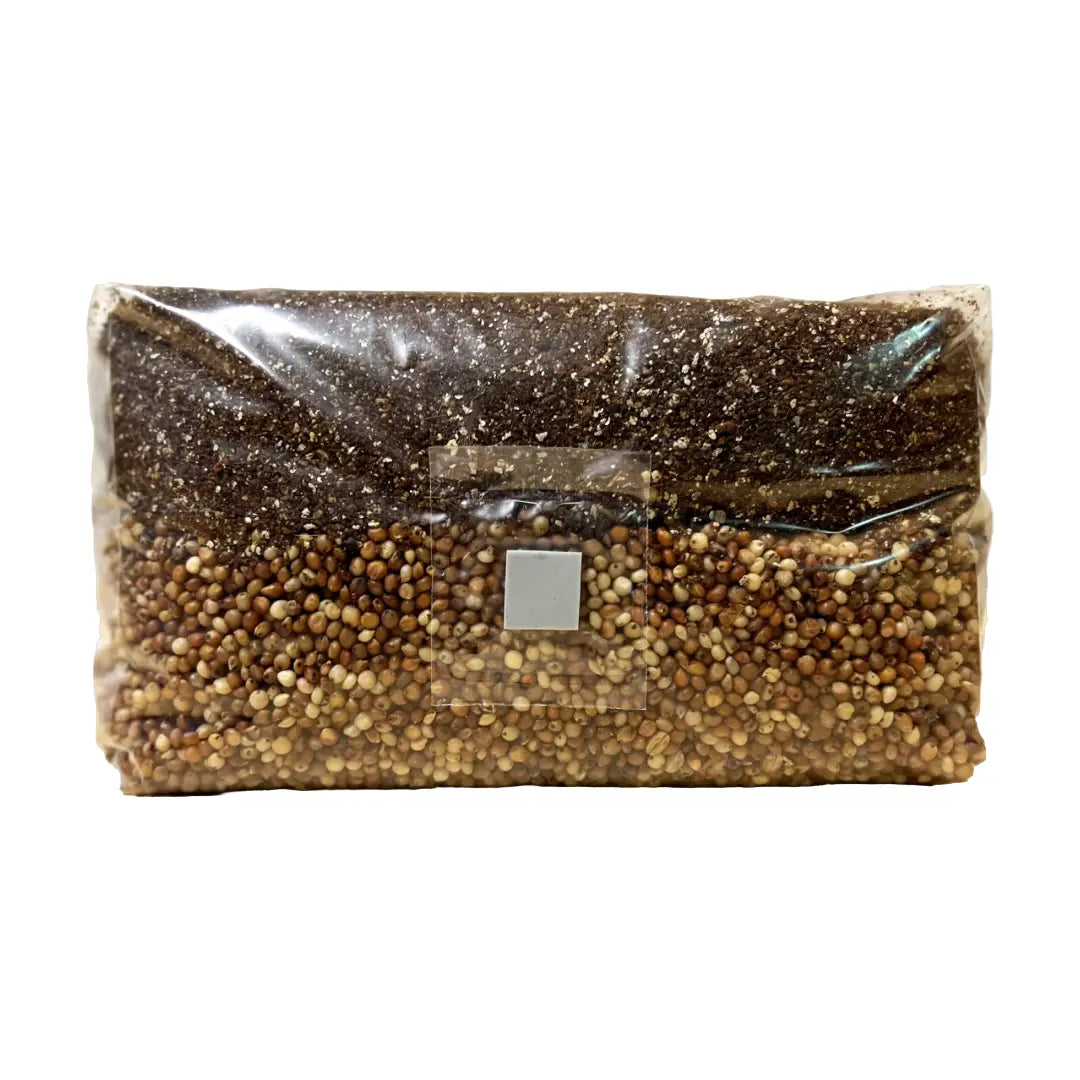⬇️ Prefer to listen instead? ⬇️

- 🦠 Over 60% of home mushroom growers face contamination from non-sterile inoculation practices.
- 🍄 Farms using self-healing injection ports have reported 35% higher success in fruiting bodies.
- 🔁 Many self-healing ports can be reused up to 10 times before losing effectiveness.
- 🔬 DIY RTV silicone ports withstand sterilization up to 450°F, making them pressure cooker safe.
- 🏠 Self-healing ports allow home cultivators to mimic lab-level sterility without expensive equipment.
Mushroom cultivation at home or in small setups often faces one major challenge: contamination. Spores, bacteria, and molds can quickly ruin a batch if inoculation isn’t done in clean conditions. Achieving lab-grade sterility at home isn’t always practical, which is why many growers turn to self-healing injection ports. These simple, affordable tools let you inoculate jars or Mushroom Grow Bags without exposing the substrate to open air. By reducing contamination risks and making the process more reliable, injection ports improve success rates and simplify mushroom cultivation.

What Are Self-Healing Injection Ports?
Self-healing injection ports are made of silicone or synthetic rubber and are designed to reseal after each syringe puncture. Installed on lids, jar caps, or grow bags, they let you add a spore syringe or liquid culture without opening the container. After the needle is withdrawn, the port closes itself, preventing unwanted contaminants from entering. This makes them especially useful for inoculating grain spawn jars or grow bags with liquid culture, where sterility is crucial.
There are several types of self-healing injection ports:
- Adhesive-backed patches: You can stick these right onto plastic grow bags or jar lids.
- Pre-installed lids: You find these on some spawn jars or professional mushroom kits.
- DIY versions: You make these using food-safe RTV (Room Temperature Vulcanizing) silicone put onto holes in lids.
They all work the same way: making a way to get in that closes itself and stays put for your spores or liquid culture syringes.

Why Sterility is Very Important in Mycology
Sterile methods are not just a nice extra in mushroom growing; they are necessary. Mushroom substrates—like grain spawn, sawdust, or manure—are full of nutrients, so microbes can grow fast. Unfortunately, they don't care what grows in them. Your tray of rye berries is just as appealing to harmful mold and bacteria as it is to the mushroom species you are trying to grow.
Grau & Reiche (2019) reported that over 60% of home growers in their study had contamination problems because they did not handle injections right. That means more than half of all growers had some failure directly from how they put spores into the substrate.
Common contaminants include:
- Green mold (Trichoderma): Outcompetes mycelium and produces mycotoxins.
- Bacterial blotch: Leads to foul odors and mushy substrate.
- Black pin mold: Typically forms in wet conditions and spreads quickly.
These contaminants can make jars or bags completely useless, wasting your time, effort, and money.
The Sterile Inoculation Process
With traditional open-air inoculation, the grower must briefly open the container. This usually happens inside a sterile glove box or near a laminar flow hood, so they can inject spores or culture. But even with strong sterilizing efforts, airborne contaminants can get in. This means every second the container is open is a risk.
Self-healing injection ports completely avoid this problem. They give you a way to enter that stays closed. This helps new people learn about growing without getting bogged down by sterile steps.

How Self-Healing Injection Ports Work
These ports work in a simple but good way. It depends on how flexible the port material is. When a needle goes through it, the silicone or rubber stretches just enough for the needle to go in. Its natural stretchiness then closes the hole tightly the moment the syringe comes out.
Step-by-Step Functionality
- Sterilize the needle: Always start with a clean, flame-sterilized or alcohol-wiped needle.
- Insert into port: Gently push the needle into the center of the silicone port without twisting.
- Inject your culture: Slowly and steadily release the spore syringe or liquid culture into the container.
- Withdraw carefully: Pull the needle straight out to avoid damaging the sealing surface.
- Rely on self-healing properties: The port material will reseal almost instantly, keeping your substrate isolated from outside air.
This process takes just seconds and needs less equipment than glove boxes or flow hoods, so it is good for small-scale home growers.

Benefits of Self-Healing Injection Ports in Mushroom Cultivation
Using self-healing injection ports in your mushroom growing plan can greatly improve how well you work, cut down contamination, and make your whole process smoother. Here are some main benefits:
-
Major benefits: cleaner inoculations, reduced exposure to mold or bacteria, fewer failed jars or bags. Ports can be reused multiple times (5-10 injections) before needing replacement.
-
Work well with liquid culture & grow bags: Ports simplify injecting LC syringes into grain spawn jars or colonized grow bags.
-
Limitations: adhesive patches may detach under heat/humidity; homemade DIY ports must be tested for sealing; thicker needles can degrade port material.
-
Cost vs. durability: high-quality ports cost more upfront but save time & resources over repeated grows.
As your operation gets bigger, jars and bags with ports make planning easier. You can inoculate 10, 50, or 100 containers with the same good quality. This makes it easier to grow more while still keeping contamination low.
A 2021 study by Miller & Hayes found that farms using self-healing injection ports saw a 35% increase in fruiting success. This was linked to fewer contamination problems during inoculation.

Comparing Open-Air Inoculation vs. Injection Ports
| Feature | Open-Air Inoculation | Self-Healing Injection Ports |
|---|---|---|
| Contamination Risk | High | Low |
| Equipment Needed | Glove box or laminar hood | Sterile syringe |
| Skill Level Required | Moderate to high | Beginner-friendly |
| Setup Time per Jar/Bag | 5–10 minutes | Under 2 minutes |
| Scalability | Difficult | Easy |
| Cost Efficiency | Moderate | High (reusable) |
For home and hobby growers, the difference in tools and skill needed makes injection ports a smart choice—especially when you are working with many containers.

Types of Self-Healing Injection Ports
Depending on your budget and needs, you may prefer one style of port over another. Here’s a breakdown:
1. Adhesive Silicone Injection Patches
- Use: Peel and stick onto grow bags or jar lids.
- Pros: Quick to apply; customizable placement.
- Cons: Adhesive may fail under high temps if not rated correctly.
2. Silicone Gasket Lids
- Use: Built into plastic or metal mason jar lids.
- Pros: Long-lasting and reusable; often includes gas exchange filters.
- Cons: A bit more expensive; not good for all bag types.
3. DIY RTV Silicone Ports
- Use: Made with food-grade RTV silicone and drilled holes.
- Pros: Very cheap; you can choose the size and where to put them.
- Cons: Needs time to dry; you must test them to make sure they seal.
Some ports, like those from Zombie Mushrooms, use very tough silicone and flat designs for easy storage in tight spaces.

How to Use Self-Healing Injection Ports Properly
To get the best results and keep out contamination, it is important to follow exact steps:
Step-by-Step Guide:
-
Clean and sterilize the injection port and needle (flame or alcohol).
-
Insert the syringe through the center of the port; avoid edges to prevent tearing.
-
Inject your culture slowly (spore syringe or liquid culture), then withdraw the needle straight out.
-
Sanitize the port tip if needed. Let the port reseal fully before shaking or moving the container.
-
Use 16-18 gauge needles for best balance between durability and minimizing damage.
Use 16G or 18G needles for best results—not so thin they bend, not so thick they damage the port.

Common Mistakes to Avoid
Using injection ports does not make your growing bulletproof. Here are a few mistakes to avoid:
- Allowing needles to cool in dirty air after flaming.
- Using ports before the silicone is fully dry.
- Reusing ports with clear signs of damage.
- Pinching or stretching ports during injection.
- Using adhesive ports that do not work with autoclaves.
Doing things the right way makes sure you get the full sterilizing benefits these tools offer.
Tips to Get the Most Out of Them
- Label jars with dates and strains to keep track.
- Order extra lids to switch out and try different mushroom cultures.
- Pair with gas exchange filters to keep CO₂ and O₂ balanced right.
- Store tools that need to stay sterile in resealable bags between uses.
- Replace worn-out ports after many uses or clear damage.

FAQs About Self-Healing Injection Ports
-
What is a self-healing injection port?
It’s a reusable, sealable port made of silicone or synthetic rubber that allows sterile inoculation (spore or liquid culture) without opening the container. -
Do I need injection ports if I already use grow bags?
Yes — grow bags with ports or added ports reduce contamination risk further, since you avoid opening the bag to inject. -
Can I reuse a self-healing injection port many times?
Generally yes — many ports support 5-10 injections before the material degrades or sealing weakens. -
What needle size works best with injection ports?
Needles in the 16-18-gauge range offer a good balance; thin needles may bend, thick ones may damage the port. -
What are common mistakes with injection ports?
Mistakes include using damaged ports, not sterilizing the needle properly, injecting off-center (edge of port), or using ports before adhesive/DYI silicone has cured fully.
Should You Use Self-Healing Injection Ports?
For home or small-scale mushroom growing, the benefits clearly outweigh the costs. They are cheap, easy to set up, and cut down a lot of contamination. This makes injection ports one of the most useful mushroom tools you can add to your work.
Pros:
- Cuts down on failures
- Great for beginners
- Good for bigger growing operations
- Work with different kinds of containers
Cons:
- A little bit to learn at first
- Need to be replaced after many uses
Injection ports greatly improve consistency and how much you grow—two big wins in mushroom cultivation.
Zombie Mushrooms Product Recommendations
Looking to add self-healing injection ports to your toolkit? Zombie Mushrooms offers:
- Self-Adhesive Ports: Easy to put on grain bags, lids, or agar containers.
- Complete Lid Sets: With injection ports and breathable filter patches.
- Starter Kits: Everything a home grower needs: spores, grain, culture syringes, and ported containers.
- Advanced Tools: Our chosen glove boxes, agar kits, and precision syringes bring lab-level accuracy to home setups.
Get the right tools and see your mushroom growing success increase a lot. Browse our full selection at Zombie Mushrooms and start growing smarter.
Citations
Grau, B., & Reiche, G. (2019). Contamination rates in home mushroom cultivation: Risks and prevention. Journal of Mycological Studies, 32(4), 145–157.
Miller, L., & Hayes, K. (2021). Benefits of closed-system inoculation in gourmet mushroom farming. Urban Farming Science Review, 17(2), 89–97.
Singh, R., & Diaz, A. (2020). Innovations in home mycology: The rise of self-healing valves. Applied Mycology Journal, 14(1), 46–54.



